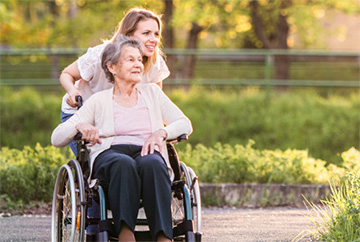In the United States, long-term care facilities serve more than 4 million residents per year — and many face an uphill battle when it comes to fighting infections. It’s estimated that 1 to 3 million serious healthcare-associated infections (HAI) occur each year in nursing homes, skilled nursing facilities and assisted living facilities.
The infections pose a serious threat to patient and worker health, during a time when long-term care facilities don’t have staff to spare. In fact, in a recent study conducted by the Association and National Center for Assisted Living, 81% reported facing recent staff shortages.
Why is infection prevention so critical for senior care residents?
First, let’s take a look at who is entering senior care facilities. According to HealthInAging.org, nearly half of people who live in nursing homes are 85 and older, and very few are under the age of 65.
Additionally, more than 80% need help with three or more activities of daily living (ADLs), 90% of residents who are able to walk need assistance or supervision, and more than half of residents have incontinence.
Across senior care, residents are entering facilities older, sicker and requiring much more care than in the past. That alone makes preventing infection and germ transmission critical priorities because the resident population is more vulnerable to viruses, bacteria, illness and disease.
Extra care — particularly around body fluid management — is critical to reducing the spread of infection.
How is infection spread?
During the delivery of care, patients and staff can be exposed to various bacteria, viruses and protozoa. The most common source of transmission is exposure to bodily fluids, and the origin of infectious agents causing HAI are the individual patient, medical equipment or devices, and patient care equipment.
It’s been found that Clostridium difficile affects nearly 10-30% of residents at any given time. Those infections are largely attributed to the contamination of inanimate surfaces, such as bed rails and bedpans. When healthcare workers must remove bedpans, for example, to dump them in in-room toilets or carry them to a centralized location, they dramatically increase the chances of spilling potentially infectious waste on the floor, toilet or their clothing. One study found that 36.7% of health workers reported having been exposed to blood and body fluid at least once in the preceding three months. Splash was the most reported injury, found in 60.3% of cases.
Even if workers are diligent about cleaning, the chance of cross-contaminating the hand shower, rags and mops are high, and bacteria and viruses can be missed and spread.
The good news: Research suggests that many common infections are preventable, and recent studies show that implementing preventative measures can result in up to 70% reduction in certain HAIs.
Hygie helps reduce the risk of HAI
Hygie provides essential products to manage body fluids quickly, eliminating contaminants at the source and preventing the spread of infections and cross-contamination through our single-patient concept. Learn more.


